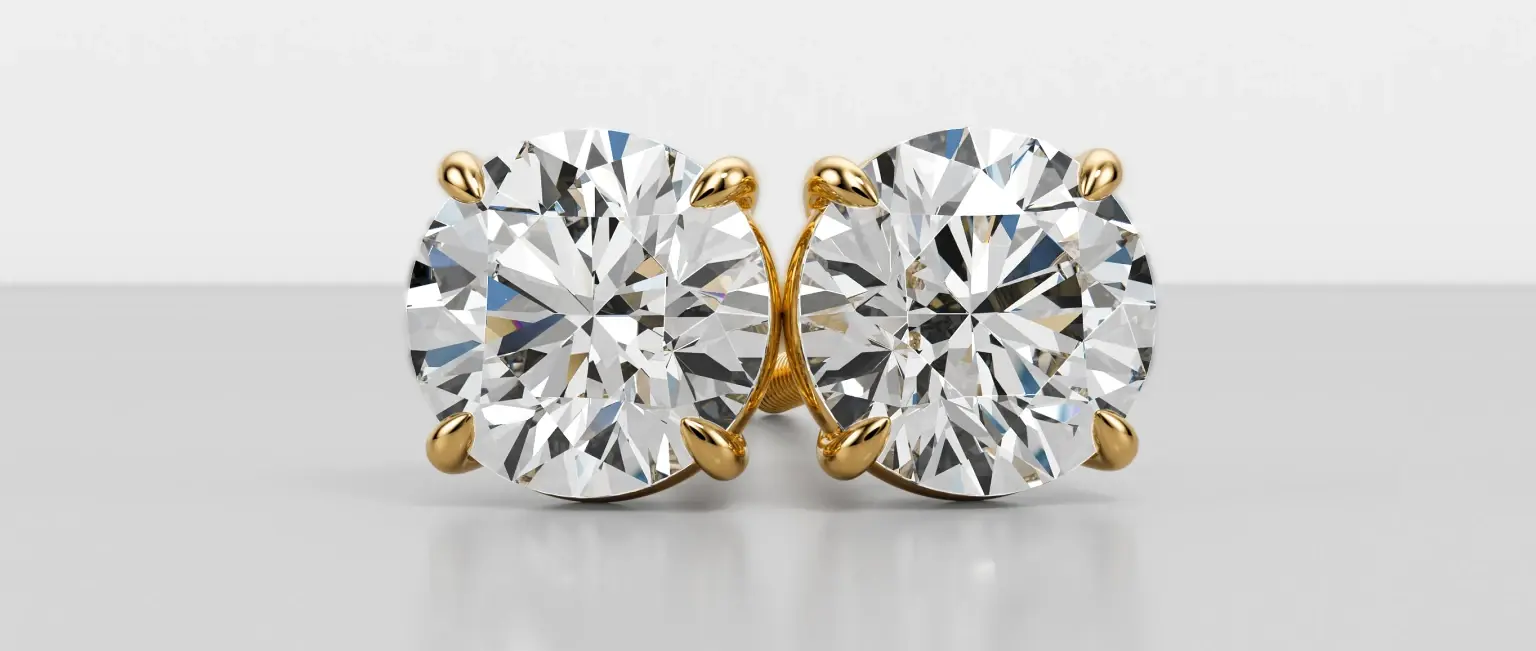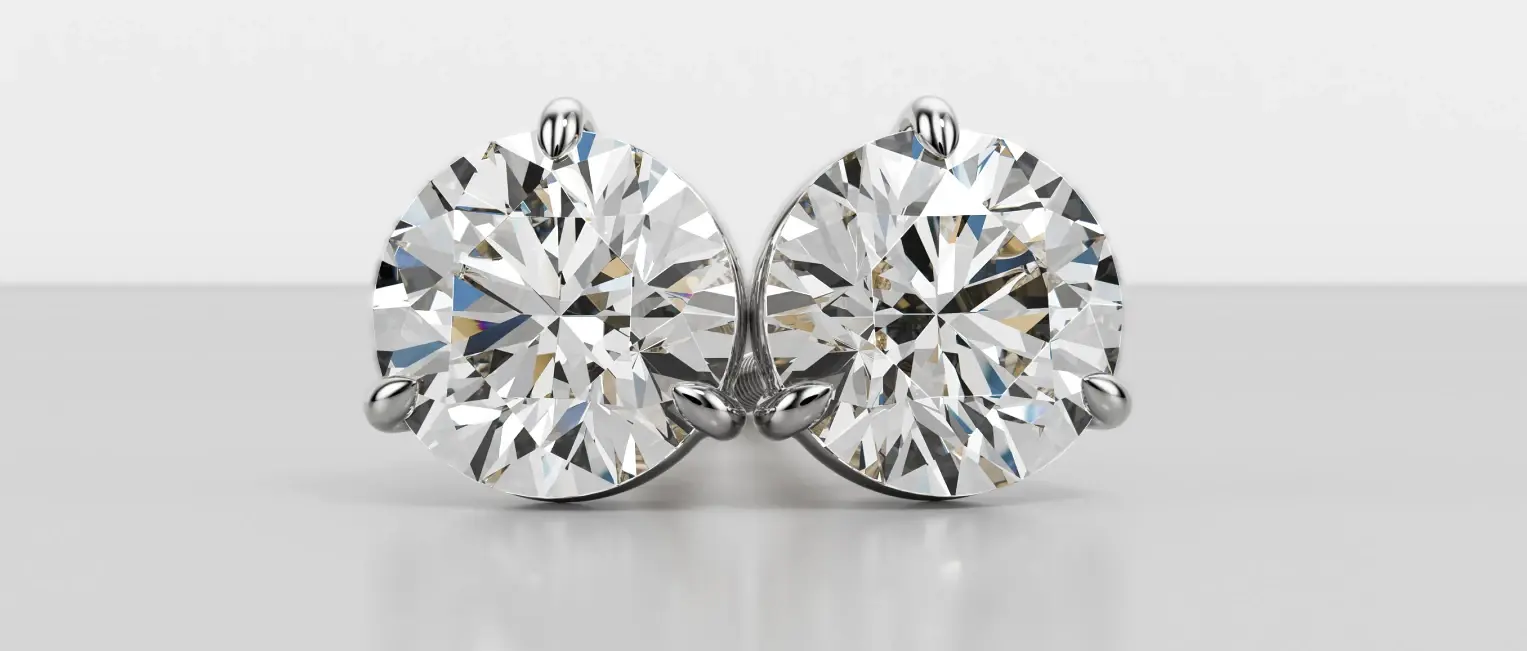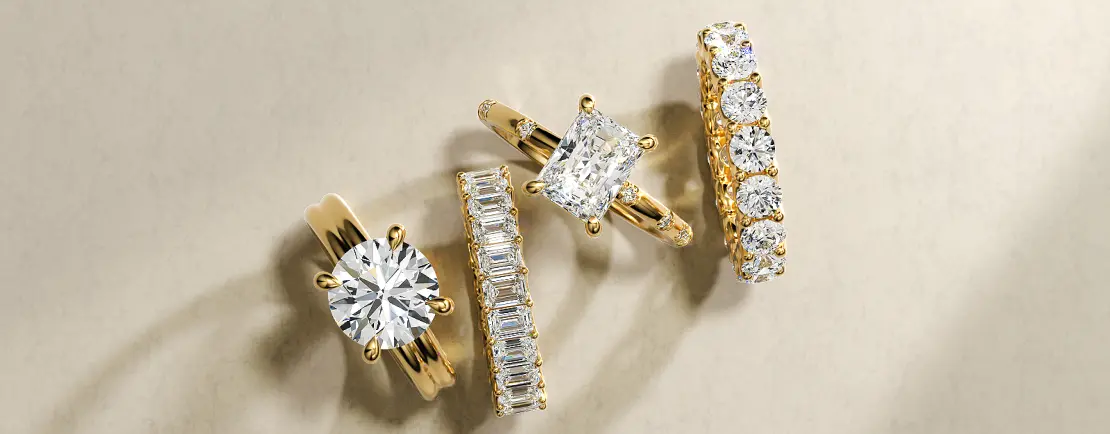Rare Diamonds: Pink, Blue, and Red Diamonds
Oct 23, 2023

When you think about diamonds, do you picture colorless, clear stones? Most people do. Many assume that all diamonds are colorless, but the truth is some of the rarest and most expensive offer stunning hues of pink, blue, and even red. What are the rarest diamond colors, and what creates them in the first place?
The Rarest Diamond Colors
While most jewelry-grade stones are clear, diamonds naturally occur in a wide range of colors. The truth is that diamonds can be found in a rainbow of colors. Called “fancy” diamonds, these can be yellow, green, brown, gray, black, purple, orange, blue, pink, and red.
In clear diamonds, the value increases directly proportional to the stone’s clarity and colorlessness. A completely clear, perfectly colorless diamond is the most valuable on the standard D-to-Z scale used by jewelers.
However, fancy diamonds are graded differently. With these stones, the strength and clarity of the color helps determine the stone’s value rather than its colorlessness. Note that colored diamonds don’t have the same vibrant, deep coloration found with other gemstones. For instance, a blue diamond will have a pale blue wash rather than the deep blue of a sapphire.
Of these, pink, blue, and red are often the most sought-after. But what causes those colors in the first place? It’s often all about the impurities of these ultra-valuable stones.
The Role of Impurities in Diamonds
Diamonds are usually synonymous with purity, but that’s something of a misnomer. All diamonds have some impurities. The degree of imperfection affects many aspects of the stone, from its clarity to its color and more.
Most diamonds are pretty impure, so much so that they’re only really fit for industrial use. An industrial diamond would never look at home on an engagement ring or wedding ring, but it is just as hard and durable as its prettier cousins, which makes it a good fit for things like laboratory work and use on drill bits and other cutting implements.
What are those impurities? Really, it’s just the inclusion of other chemicals beyond carbon in the makeup of the stone. These include boron, nitrogen, and sulfur, as well as many others. The specific chemical and its density will determine the color of the stone in most cases.
While you’ll find many different colors available, they don’t all enjoy the same level of demand today. Blue, pink, and red diamonds are currently the most popular.
Blue Diamonds

Fancy Blue
Blue diamonds are among the rarest and most valuable on the market. The blue color is caused by the presence of boron in the stone, the more boron present in the stone’s makeup, the bluer it will be.
While all diamonds are created deep in Earth’s crust, blue diamonds are formed around 410 miles below the surface (and lower). This depth, combined with the need for significant amounts of boron in the formation process, makes blue diamonds very rare. Large, vibrant stones are even rarer, allowing them to command very high prices.
Blue diamonds can range from stones with just the barest hint of the color to a pale, baby blue. Lab diamonds can have an even deeper blue than what’s available naturally. One example of this type of stone is the Oppenheimer Blue Diamond, which sold for $57.8 million. The Hope Diamond is perhaps the most famous example of this type.
Pink Diamonds

Fancy Light Pink
Pink diamonds are among the most popular fancy stones available today. They are also an exception to the rule when it comes to impurities causing coloration. Where blue, yellow, brown, and other hues are caused by the inclusion of nitrogen, boron, and other chemicals, pink diamonds get their color from something else entirely: a distortion in the stone’s crystalline lattice.
A diamond’s crystalline lattice is a net formed by carbon atoms joined together to create tetrahedrons. Each unit includes eight atoms – four inside the crystal lattice and four that form the face-centered lattice. In pink diamonds, this lattice is distorted by intense heat and pressure. The distortion creates a broad absorption band centered at 550 nm in spectroscopic analysis, according to the GIA.
As a note, some pink diamonds get their color from the inclusion of nitrogen. These are not truly pink, though. They usually contain bands of pink and brown within the glide planes. Jewelers cut the stones to maximize the visibility of these bands, but the stones are not solid pink and thus have less demand and command lower prices.
Naturally, pink diamonds are among the most desirable stones today, particularly for use in engagement ring.
Red Diamonds

Fancy Red
Red diamonds are another exception to the impurities rule. They’re created by the same process responsible for turning other diamonds pink. The difference here is that the crystalline lattice has been even more deformed. Another difference here is that red diamonds often have a vibrant, deep red hue, while other colored diamonds are usually paler than other colored gemstones.
Red diamonds are the rarest of fancy diamonds. To date, only 20 to 30 red diamonds have ever been found.
As such, even small stones can command very high prices. On average, they can command over hundreds of thousands of dollars per carat. Most stones are under a half-carat in size, however. Larger stones do exist, though. The Moussaieff Red measures 5.11 carats, while the Hancock Red Diamond measures .95 carats.
Finding the Perfect Colored Diamond for You
Colored diamonds offer a vivid difference from traditional clear stones. They can work quite well on engagement rings but can also make wonderful statement pieces when included in wedding rings, pendants, and even earrings. And, while pink, blue, and red are the rarest and most popular fancy-colored diamonds currently, you’ll discover a rainbow of options.
That makes it simple to find colored diamonds to match any hue preference you might have, whether you want to complement a particular outfit or find jewelry that will be a timeless accompaniment to your eye color or personal color palette.





















